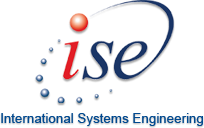2020 Outlook into the GCC Metal Industry - New Capabilities and Geographic Expansion Presents Opportunities - ResearchAndMarkets.com
The "GCC Metal Industry Outlook, 2020" report has been added to ResearchAndMarkets.com's offering.
The year 2020 is anticipated to be a step forward for the Gulf Cooperation Council (GCC) region's effort towards non-oil diversification and manufacturing sector growth. The nascence of the metal downstream industry has led to import dependency in the GCC.
Government initiatives towards the development of the downstream metal industry have resulted in its inclusion in a number of Vision documents across GCC member countries. This is anticipated to yield results in 2020. By 2030, the region is anticipated to establish itself as a net exporter of value-added products. Especially in KSA, where budget spends have been channelized towards industrial clusters and non-oil diversification through manufacturing expenditure, traction is expected in 2020. The UAE is anticipated to have increased FDI towards economic development through infrastructural and manufacturing activity starting in 2020 for the next five years. Bahrain, Kuwait, Oman, and Qatar are in the process of allocating budgets in line with their visionary growth plans.
The business environment is expected to be conducive for the existing opportunities-and the addressable import gap is a likely indicator of this factor. Value-added production is anticipated to be the key highlight in the steel industry, as regional governments provide domestic safeguard measures in the form of import duties. The aluminium and copper industries are likely to present new investment opportunities, especially in the KSA and UAE. The increasing focus upon the manufacturing sector and the demand for value-added products have been a new trend in the steel industry. Producers have been aligning their growth plans to cater to the domestic industry, which has up to now, been catered to by imports.
The global overcapacity in steel and the domestic demand downturn resulted in a lowered utilization rate for finished steel production in 2019. In terms of the aluminium market, the region continued to be a net exporter of primary metal due to minimal downstream demand.
Creation of a strategic roadmap for the downstream industrial development for metals has been a salient highlight during the past 2 years. This trend is expected to continue, with primary smelters looking at energy-efficient processes and liaising with new market participants to establish the downstream industry in the region. The region has historically been a net importer of semis, and value-added products. The nascence of the downstream industry provides significant growth opportunities for a new participant to liaise with the domestic talent to commence manufacturing in the region.
The GCC region also has access to new technology innovations. Partnering with reputed global firms will lead to higher operational efficiency and improved cash flows. This is an important factor to consider before making new investments into a region, which is faced with competition from lower-priced imports from Asian markets. Excess global capacity in steel, and lower domestic demand for aluminium and copper as compared to favourable, local export markets has led many foreign investors to consider Southeast Asia and countries such as India for geographic expansion. However, the conducive business environment that the GCC governments have been initiating, combined with lower energy costs, and availability of skilled manpower should be considered as attractive factors for considering the region for investment.
Key Topics Covered:
1. Executive Summary
- Key Highlights of 2019
- Top Predictions for 2020
- GCC Ferrous Market - Outlook for 2020
- GCC Non-Ferrous Market - Outlook for 2020
- GCC Scrap Metal Sector - Outlook for 2020
- Installed Capacity in 2019
- Market Demand - 2019 and 2020
2. Research Scope and Segmentation
- Research Scope
3. Key 2020 Market Trends in the Indian Metal Industry - Ferrous, Non-Ferrous, and Scrap Metal
- Key 2020 Trends in the Metal Industry
- Key 2020 Trends in the Scrap Metal Sector
- Trend 1 - Impact of Mega Events
- Trend 2 - Non-Oil Economic Diversification and Development of Downstream Industries
- Trend 3 - Downstream Metal Industry Development
- Trend 4 - Promotion of Closed-Loop Waste Management
4. Ferrous Market Outlook
- GCC Ferrous Market - Outlook for 2020
- Key Trends in the Demand for Finished Steel
- Crude Steel Capacity
- End-User Industry Overview
- Market Highlights for 2020
- Key Market Participants
5. GCC Non-Ferrous Market Outlook
- GCC Non-Ferrous Market - Outlook for 2020
- Primary Aluminium Capacity
- Key Trends in the Demand for Aluminium
- End-User Industry Overview - Aluminium
- Key Trends in the Demand for Copper
- End-User Industry Overview - Copper
- Key Market Participants
6. GCC Scrap Metal Sector Outlook
- GCC Scrap Metal Sector - Outlook for 2020
- Benchmarking GCC with the World
- Scrap Metal Value Chain
- Key Market Participants
7. Growth Opportunities and Companies to Action
- Growth Opportunity 1 - New Capabilities and Geographic Expansion
- Growth Opportunity 2 - Partnerships and Investment
- Strategic Imperatives for Success and Growth
Companies Mentioned
- Bahrain
- Kuwait
- Oman
- Qatar
For more information about this report visit https://www.researchandmarkets.com/r/ddg560
View source version on businesswire.com: https://www.businesswire.com/news/home/20200319005409/en/



